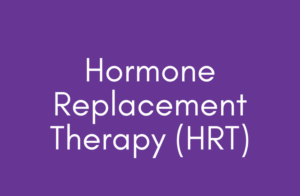
Nevertheless, a significant concern for patients contemplating HRT is the associated costs. Expenses can differ based on the type of medication, method of delivery, and the extent to which insurance may assist in covering the treatment. In this article, we will analyze the actual costs of HRT, examine insurance coverage across different countries, and provide practical advice for reducing expenses.
1. What is HRT?
Hormone replacement therapy entails the supplementation of hormones such as estrogen, progesterone, or testosterone. It is generally prescribed for:
- Menopause and perimenopause
- Hormonal deficiencies
- Post-surgical recovery following the removal of ovaries
- Certain gender-affirming treatments
HRT is offered in various forms:
- Oral tablets (commonly used and typically the least expensive)
- Patches (transdermal delivery)
- Creams and gels (applied directly to the skin)
- Vaginal rings (for localized symptoms)
- Injections or pellets (long-lasting but often more costly)
- Each method presents different costs, insurance coverage options, and levels of convenience.
2. How Much Does HRT Cost Without Insurance?
The out-of-pocket expenses for HRT can vary significantly, depending on whether one opts for generic or brand-name medications and the chosen delivery method.
Average price ranges include:
- Generic oral estrogen pills: $10 – $30 per month (very affordable).
- Brand-name pills: $50 – $100+ per month.
- Patches: $60 – $300 per month, contingent on brand and dosage.
- Vaginal rings: $100 – $400 every few months.
- Creams and gels: $50 – $250 per month.
- Injections: $40 – $150 per injection (frequency varies).
- Pellets: $200 – $500 per insertion (may last 3–6 months but typically includes clinic fees).
- Bottom line: HRT can range in cost from $10/month to over $500/month, depending on the provider.
3. HRT Hidden Expenses
The medication itself isn’t the only cost. Patients need to budget for:
- Physician visits ($100–$300 per visit if uninsured).
- Blood work ($50–$200 per test, frequently every 6–12 months).
- Follow-up visits (these can tack hundreds onto the yearly total).
- Office procedures for things like pellet insertion.
- For those who are uninsured, these additional expenses can tack $500–$1,500+ onto their yearly total.
4. Does Insurance Cover HRT in the U.S.?
In the US, insurance coverage for HRT varies by plan and provider.
- Private Insurance
- Most commercial plans cover at least a portion of HRT medications, particularly generic estradiol.
- Brand-name versions might have higher copays, prior authorization, or step therapy (giving generics first).
- Some insurers do not cover compounded versions or view them as “cosmetic.”
Medicare
- Medicare Part D plans usually cover HRT medications when prescribed to treat menopause or hormone deficiency.
- Copays differ by plan and tiered formulary.
- Brand drugs are typically on higher levels with greater coinsurance.
Medicaid
- Coverage is state-specific but typically covers basic HRT drugs when medically indicated.
5. HRT Coverage in Other Countries
United Kingdom (NHS)
- The majority of HRT drugs are funded by the NHS at a standard prescription cost.
- The HRT Prescription Prepayment Certificate (PPC) provides unlimited HRT prescriptions for a year for a set price — extremely cost-effective for frequent users.
Canada
- Provincial health plans do not cover HRT medications as completely as private insurance, but private insurance will typically cover them. Generics are common and less expensive.
India and Other Low-Cost Areas
- HRT medications tend to be less costly than in the U.S.
- Branded imports and specialty therapies (such as pellets) may still be expensive.
6. Why Coverage Varies
Insurance companies and national healthcare systems determine HRT coverage based on:
- Medical necessity (treatment of menopause vs. use in lifestyle).
- Availability of generics (less expensive generics are typically covered first).
- Formulary limits (some items need preapproval).
- Healthcare models and country regulations.
7. How to Save Money on HRT
If cost is an issue, here are some tips:
1. Request generics — Estradiol generics and progesterone generics are considerably less expensive than their brand counterparts.
2. Utilize pharmacy discount programs such as GoodRx in the U.S. to access lower cash prices.
3. Look for manufacturer coupons — Numerous companies have savings cards.
4. Shop around pharmacies — Prices are dramatically different for local versus online pharmacies.
5. Mail-order or 90-day supplies may be cheaper than monthly refills.
6. Prepayment programs (such as the NHS HRT PPC) are cost-saving for regular prescriptions.
7. Telehealth services at times provide HRT with reduced consultation + medication cost.
8. Requesting insurance exceptions — A doctor’s note. may be able to get you coverage for non-formulary drugs.
8. Case Studies (Examples)
Example 1: U.S. Patient with Insurance
- Generic estradiol tablets: $10 copay per month.
- Annual labs & visits: ~$300.
- Total yearly cost: ~$420.
Example 2: U.S. Patient Without Insurance
- Branded patch: $250/month = $3,000/year.
- Doctor visits & labs: $800/year.
- Total yearly cost: ~$3,800.
Example 3: U.K. NHS Patient
- With HRT PPC: £19.80/year (covers all HRT prescriptions).
- Visits: Free under NHS.
- Total annual cost: < £50.
9. Questions to Ask Your Doctor
When beginning HRT, ask:
- Is there an equal generic version?
- Will I require repeated blood tests, and are they insurance-covered?
- What are the lowest-cost but effective forms?
- Can you give me samples to test before committing?
- How frequently will I require follow-ups?
10. Conclusion
The price of hormone replacement therapy (HRT) can be low (less than $20/month for generics) or high (more than $500/month for specialty or brand-name medications). Insurance coverage is a big factor in keeping it affordable, but specifics depend on your plan and location.
The silver lining: by making smart decisions — including taking generics, discount programs, and insurance prepayment plans — most patients can significantly lower their HRT expenses.
Always review your plan’s formulary and discuss openly with your physician cost-saving alternatives.